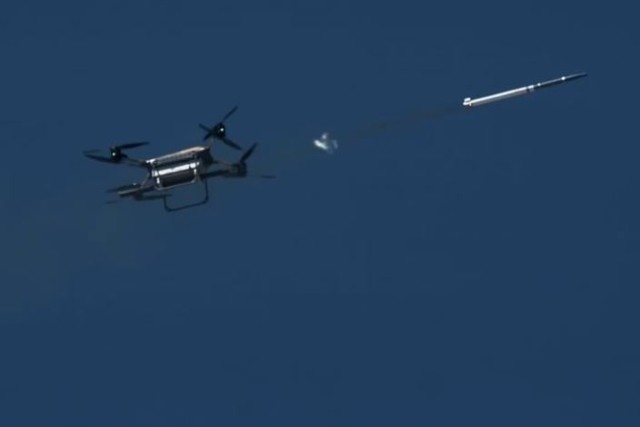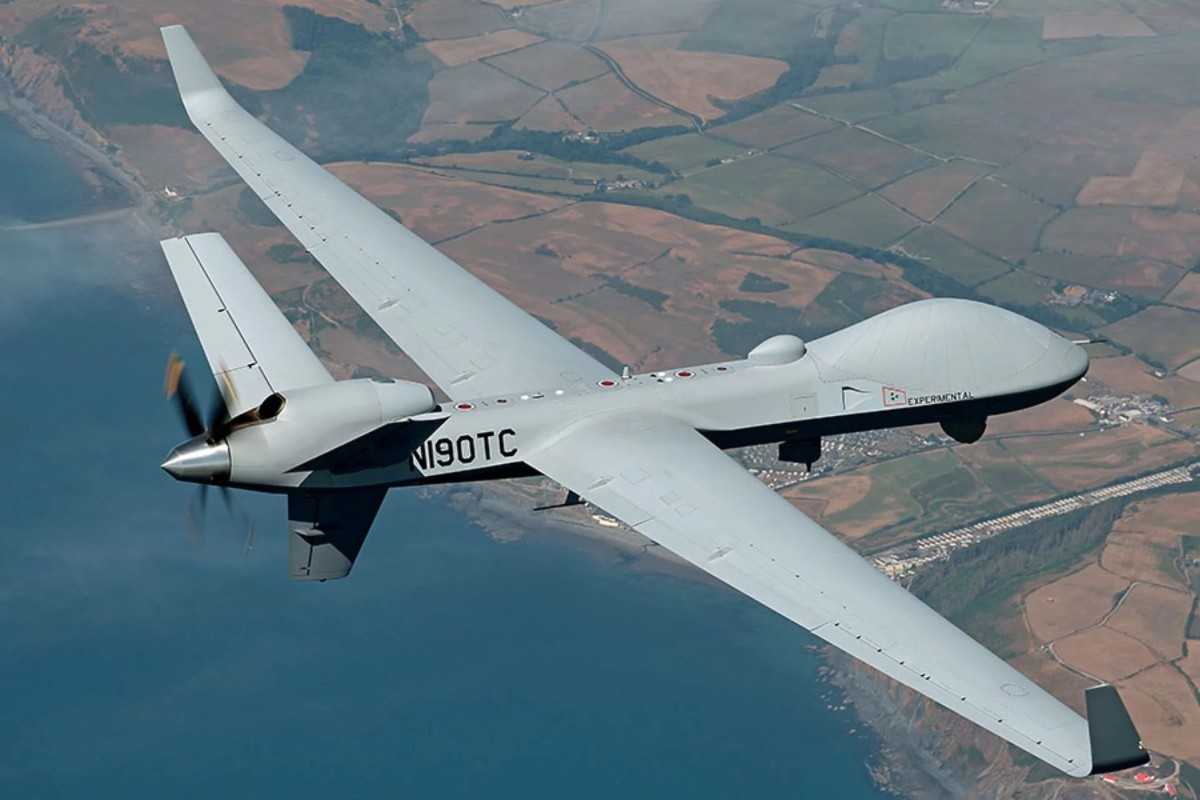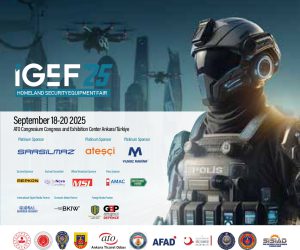Technological advancements are a significant element in defining the contours of war and politics since the industrial revolution. In the contemporary period, technological innovations are enabling states to deal with emerging threats. Deployment of new and complex weapons systems with greater lethality and speed, backed by a large quantum of information is one of the many wonders of technological advancement. In the 21st century, new technologies are creating their impact on regional and international security. The development of drone technology is one of them.
More than a hundred states and non-state actors all across the world have access to military drones that are armed, unmanned and high-tech. This number is growing fast and drones are becoming a significant component of militaries in several countries. According to an estimate, the market for military drones is expected to increase from US$11.73 billion in 2022 to US$30.86 billion in 2029.
The emergence of drones in warfare
Drone technology was introduced by the US army during WWI. They developed an aerial torpedo to target the enemy. During the interwar period, the UK developed the Queen Bee, a bi-plane, converted to be controlled by radio from the ground. Similarly, during WWII, the US produced the first remote-controlled aircraft called the radio Plane OQT. Likewise, the US remotely piloted a B-17, as part of a test program, during the war.
Read More: Chosen Trauma and Terrorism: The Jewish Victim Narrative
During the cold war period, drones fitted with cameras were used for enemy surveillance, for instance, Israel developed Tadiran Mastiff UAV and IAI scout for surveillance purposes. In 1986, Israeli engineer Abraham Kerim developed a prototype GNAT 750, which was purchased by General Atomics. During the Bosnian war, the CIA used it against Serbian tanks and ground troops.
Drones in the 21st Century
During the US war on terror at the beginning of21st century, the convergence of satellite technology composites and computer miniaturization expedited the development of drones like General Atomics MQ-1 Predator, a redesigned version of GNAT-750 for the US military. MQ-1 could stay airborne for long periods, and it could be controlled from a ground station in another country. Predator was the first modern drone flown over Afghanistan with surveillance cameras attached to track the movement of Al-Qaeda (AQ) leader Osama bin Ladin(OBL) after AQ’s 1993 World Trade Center bombing and 1998 attacks on US embassies in Africa.
However, after the incident of 9/11, the drone became the face of the US war on terror across the globe. CIA deployed drones loaded with Hellfire missiles to target terrorists mainly in Pakistan, Afghanistan and Yemen. According to the Bureau of Investigative Journalism, the CIA initiated close to 14,000 drone strikes between 2010 and 2020 which killed 8,858-16,901 people.
Drone strikes were considered to be the key element of the US strategy to eliminate Al-Qaeda and ISIS leadership. Presently, the US has the largest drone inventory in the World. According to the US Department of Defense, it operates more than 11,000 Unmanned Aircraft Systems (UAS) in support of domestic training events and overseas missions. This aircraft range in size from the small RQ-11B Raven to the largest RQ/MQ-4 Global Hawk/Triton, which weighs more than 32,000 pounds.
Drones in Middle Eastern Conflicts
The conflicts in the Middle East particularly in Libya which has been ravaged since the fall of Gadhafi in 2011. The fight pits the UN-backed government of the National Accord (GNA) against self-declared leader Khalifa Haftar of the Libyan National Army (LNA) as the country has been divided into GNA-controlled Libyan capital, Tripoli, and LNA-controlled Benghazi. Both parties are supported by regional and extra-regional powers for advancing their own interests. Turkey and Qatar have been supporting the GNA-led government while UAE, Saudi Arabia, Russian and France are supporting the LNA faction.
Read More: New Generation Rifle BR20 from Pakistan Ordinance Factory
In April 2019, forces led by Gen- KhalifaHaftarattacked the capital Tripoli. Though conventional military forces failed to achieve their objective initially both sides tried to maintain air superiority by deploying drones. Turkey supplied Bayraktar TB-2 drones to the GNA government meanwhile, UAE supported LNA by deploying Chinese Wing Loong drones. The Chinese-made drones with a combat radius of 1,500km (932 miles), and equipped with precision-guided missiles and bombs helped the LNA forces breach the defense and enter the capital Tripoli.
On the other hand, Turkish-made TB-2 drones helped GNA forces to thwart further advances and retake the areas captured by LNA forces. According to the UN, the Libyan conflict has witnessed the largest drone war in the world since 2019, accounting for more than 900 drone missions. With the help of relatively cheap drones, deadly war has prolonged the conflict in Libya.
Drones in African Conflicts
During the two years long Ethiopian conflict, the bloody civil war between the government and Tigray People’s Liberation Front (TPLF) killed thousands and uprooted millions from their homes. The government forces attacked TPLF positions with the help of a mixed array of drones purchased from Iran, Turkey, UAE and China.
The drones tipped the balance in the favor of the government forces when TPLF fighters were marching to capture the capital, Addis Ababa. According to the TPLF commander, “Swarms of drones appeared overhead, striking soldiers and supply convoys” leading to the forces’ withdrawal and loss of territory gained in all previous battles.
Drones in South Caucasus Region
In 2020, the role of drones was significant during the war between Azerbaijan and Armenia over the disputed region of Nagorno-Karabakh. During the six-week-long conflict, the drones played a major role in decimating the Armenian forces. The extensive and effective use of drones by Azerbaijan helped limit the war causalities. The drones helped Azeri troops to locate the Armenian positions, and military hardware in real-time. The armed drones destroyed numerous Armenian tanks, artillery, and air defense systems making swift advancements. Armenian forces relied on the least effective drones, conventional Russian weaponry and traditional tactics.
Read More: A Different Story of Pakistan and Bangladesh
In total, Armenia lost 18 air defense systems worth $485 million including two S300 Air Defense Systems. Additionally, combat vehicles, tanks, radars, howitzers, multiple launch rocket systems, and electronic warfare systems worth $515 million were destroyed by armed drones. In total, Azerbaijan destroyed $1 billion worth of Armenian military equipment with the help of Armed UAVs. In the Nagorno-Karabakh conflict, Azerbaijan lost two Bayraktar TB2 drones valued at $6 million.
Military drones are standing out reliable defence mechanism in the ongoing Russia-Ukraine war. Since the Russian attack on Ukraine in February 2022, Ukrainian forces held their ground against much stronger and better-equipped Russian forces. The Turkish-supplied TB-2 drones proved to be the most needed military hardware in Ukraine. Ukrainian forces also used commercial drones for surveillance and destroyed Russian military equipment. On the other hand, Russian forces deployed Orlon-10, Orlan-30, Eleron-3, Takhion, Zastava and Zala ISR drones along with additional helicopter-type models for ISR and combat missions.
The drones helped Russian forces to pinpoint Ukrainian artillery positions and demonstrated their capacity to penetrate the enemy forces’ aerial cover and hover above the enemy’s positions undetected, enabling follow-up strikes. With the help of Turkish supplies, took out six Russian armoured vehicles, five artillery systems, six naval ships, and more than a dozen missile systems, among other targets.
Challenges
The conflicts in the 21st century increasingly witnessed the use of drones. From the two decades-long US war on terror to the Russia-Ukraine war, drones played a prominent role in the war and violent conflicts. This new era of drone warfare involves many more players thus, raising complex operational, legal and moral problems. Non-state actors especially terrorist organizations equipped with armed drones are able to access damaging airpower to take out sophisticated systems of the states. Groups such as Hezbollah, and Houthis have already demonstrated their capabilities to use drones for surveillance and attacks.
States are merging drones with digital technologies to enable high-definition surveillance and precision strike against enemy ground forces. Drones are cost-effective against heavy missile defense systems, smaller than traditional military aircraft and require a different kind of system for defense against them. Many states are now trying to develop countermeasures against drones, and the future battlefield may see the use of such systems against drones.
The Way Forward
Nevertheless, hacking, jamming and electromagnetic pulses are some of the weaknesses of remote-controlled unmanned military systems. States and non-state actors can spoof and manipulate signals to take control of the drone and eventually reverse engineer its technology. For instance; Iran captured a US drone RQ-170 Sentinel stealth in 2011 and reverse-engineered it. To counter such interceptions, a greater emphasis may be placed on developing cyber capabilities because weapons like drones have made it easier and cheaper to kill a human being. With these weapons readily available in the wrong hands is a catastrophe waiting to happen.
Future warfare would be unmanned, connected with artificial intelligence (AI) and robotics in all domains of warfare. Drones and autonomous systems are the next big thing after the internet revolution. It could be a low-hanging fruit for states like Pakistan to develop offensive capabilities with minimum resources. States need to consider the challenges and opportunities presented by the evolution of warfare while investing in defense industries in the future.
About Author
Syed Ali Abbas is the managing editor of Global Defense Insight. He is also a researcher at Center for International Strategic Studies, Islamabad.
- Global Defense Insighthttps://defensetalks.com/author/umair/
- Global Defense Insighthttps://defensetalks.com/author/umair/
- Global Defense Insighthttps://defensetalks.com/author/umair/
- Global Defense Insighthttps://defensetalks.com/author/umair/













